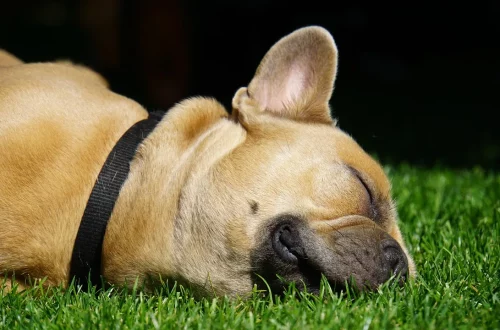
The Ultimate Guide to Merle Great Dane Puppies: Care and Training Tips
Caring for a new puppy is an exciting yet challenging endeavor, especially when it comes to a breed as unique and majestic as the Merle Great Dane. Known for their striking appearance and gentle temperament, these dogs are a delightful addition to any family. However, prospective owners must understand that owning a Great Dane goes beyond just admiring their beauty. It involves a commitment to their health, training, and well-being.
Great Danes, particularly those with the Merle coat pattern, require special attention due to their size and specific needs. They are often referred to as “gentle giants,” but this nickname belies the responsibility that comes with raising such a large breed. From nutrition to socialization, the journey of training and caring for a Merle Great Dane puppy can be both rewarding and demanding.
As you embark on this journey, it’s essential to equip yourself with the knowledge necessary to provide the best upbringing for your new furry friend. With the right guidance, you can navigate the intricacies of Great Dane care and training, ensuring that your puppy grows into a happy, healthy, and well-adjusted adult dog.
Understanding the Merle Great Dane: Unique Characteristics and Temperament
The Merle Great Dane is a variation of the traditional Great Dane breed, distinguished by its unique coat pattern. The Merle pattern consists of a marbled effect, often combining various shades of gray, black, and blue. This striking appearance makes them stand out among their peers. However, the Merle pattern isn’t just an aesthetic feature; it may also come with certain health considerations that potential owners should be aware of.
In terms of temperament, Great Danes, including Merle variations, are generally known for their friendly and affectionate nature. They tend to be good with children and can be quite protective of their families. Their gentle disposition is complemented by a playful spirit, making them excellent companions. Despite their size, Great Danes are often considered indoor dogs, as they thrive on human interaction and companionship.
However, it’s essential to note that the socialization process for Merle Great Danes is crucial. Early exposure to various environments, people, and other animals will help shape their behavior and reduce the likelihood of anxiety or aggression later in life. Consistent training, starting from puppyhood, is also vital to ensure that they understand boundaries and commands.
Furthermore, as with any breed, genetics can play a significant role in determining temperament. Potential owners should research reputable breeders who prioritize the health and temperament of their dogs. This ensures that you bring home a puppy with a well-balanced temperament, setting the stage for a loving and friendly family member.
Essential Care Tips for Your Merle Great Dane Puppy
Caring for a Merle Great Dane puppy requires a comprehensive understanding of their physical and emotional needs. Given their rapid growth rate, nutritional needs are paramount. Puppies require a balanced diet rich in protein and essential nutrients to support their developing bodies. It’s advisable to choose high-quality puppy food specifically formulated for large breeds to prevent obesity and related health issues.
Hydration is equally important. Always ensure that fresh water is available, as Great Danes can become dehydrated, especially after playtime or exercise. It’s crucial to monitor their weight regularly, as Great Danes are susceptible to bloat, a life-threatening condition that can occur if they eat too quickly or engage in vigorous activity immediately after meals.
In addition to diet, exercise plays a significant role in the health of your Great Dane. While they are known for their laid-back demeanor, puppies still need regular exercise to promote healthy development. Short walks and play sessions are ideal, but avoid overly strenuous activities until they are fully grown, as their joints are still developing.
Grooming is another aspect of care that cannot be overlooked. Merle Great Danes have short coats that require minimal grooming, but regular brushing helps reduce shedding and keeps their skin healthy. Additionally, be attentive to dental hygiene, ear cleaning, and nail trimming, as these are essential components of overall care.
Lastly, establishing a consistent routine for veterinary check-ups is vital. Regular vaccinations, parasite control, and health screenings can help catch any potential issues early on. This proactive approach ensures that your Merle Great Dane remains healthy and happy throughout their life.
Training Your Merle Great Dane: Techniques for Success
Training a Merle Great Dane puppy can be a fulfilling experience, but it requires patience, consistency, and positive reinforcement. Due to their size, it’s essential to begin training early to prevent any behavioral issues from developing. Start with basic commands such as sit, stay, and come. This foundational training not only fosters good behavior but also establishes a strong bond between you and your puppy.
Socialization is a critical part of the training process. Expose your Great Dane puppy to different environments, people, and animals in a controlled manner. This exposure helps them develop confidence and reduces the chances of fear-based reactions in adulthood. Puppy classes can be an excellent way to facilitate socialization while also providing structured training opportunities.
Positive reinforcement techniques, such as treats and praise, work wonders with Great Danes. They respond well to rewards, making them more likely to repeat desired behaviors. Avoid harsh training methods, as these can lead to fear and anxiety, ultimately hindering the training process.
Consistency is key in training. Establish clear rules and boundaries, and ensure that all family members adhere to them. This consistency helps your puppy understand expectations and fosters a sense of security.
As your puppy matures, consider incorporating more advanced training techniques, such as agility or obedience classes. These activities not only provide mental stimulation but also reinforce the bond between you and your Great Dane.
Finally, always remember that training is an ongoing process. Regular practice and reinforcement of commands and behaviors will help maintain your dog’s skills and ensure they remain well-behaved throughout their life.
Health Considerations for Your Merle Great Dane
While Merle Great Danes are generally healthy, they are predisposed to certain health conditions that owners should be aware of. One of the most significant concerns is bloat, a serious condition that can affect large breeds. Symptoms include a distended abdomen, restlessness, and attempts to vomit without producing anything. If you notice any of these signs, seek veterinary assistance immediately.
Hip dysplasia is another common issue in Great Danes, where the hip joint doesn’t fit properly into the hip socket. This condition can lead to arthritis and mobility issues. Regular veterinary check-ups and maintaining a healthy weight can help mitigate the risk of developing hip dysplasia.
Eye issues, such as cataracts and progressive retinal atrophy, can also occur in Merle Great Danes. Regular eye examinations can help detect these issues early, allowing for timely intervention.
Additionally, due to their unique coat pattern, Merle Great Danes may be at a higher risk for certain genetic conditions. It’s essential to work with a reputable breeder who conducts health screenings on their breeding dogs to minimize the risk of passing on genetic disorders.
In conclusion, while the Merle Great Dane is a magnificent breed, potential owners must be proactive in their care and training. By understanding their unique needs and addressing health concerns early on, you can ensure that your Great Dane leads a long, healthy, and happy life.
**Disclaimer:** This article is for informational purposes only and should not be considered medical advice. Always consult a veterinarian for health-related concerns regarding your pet.




